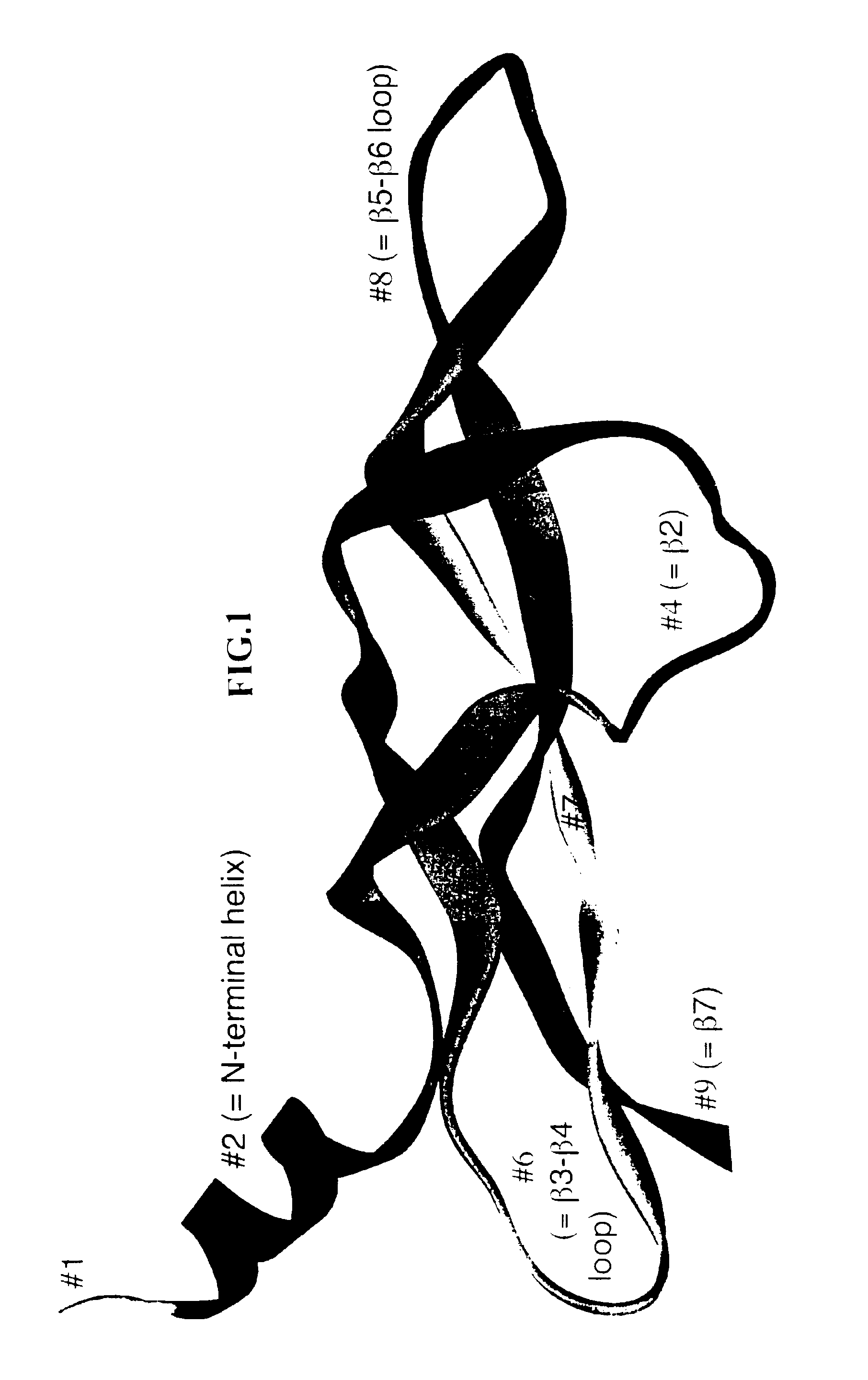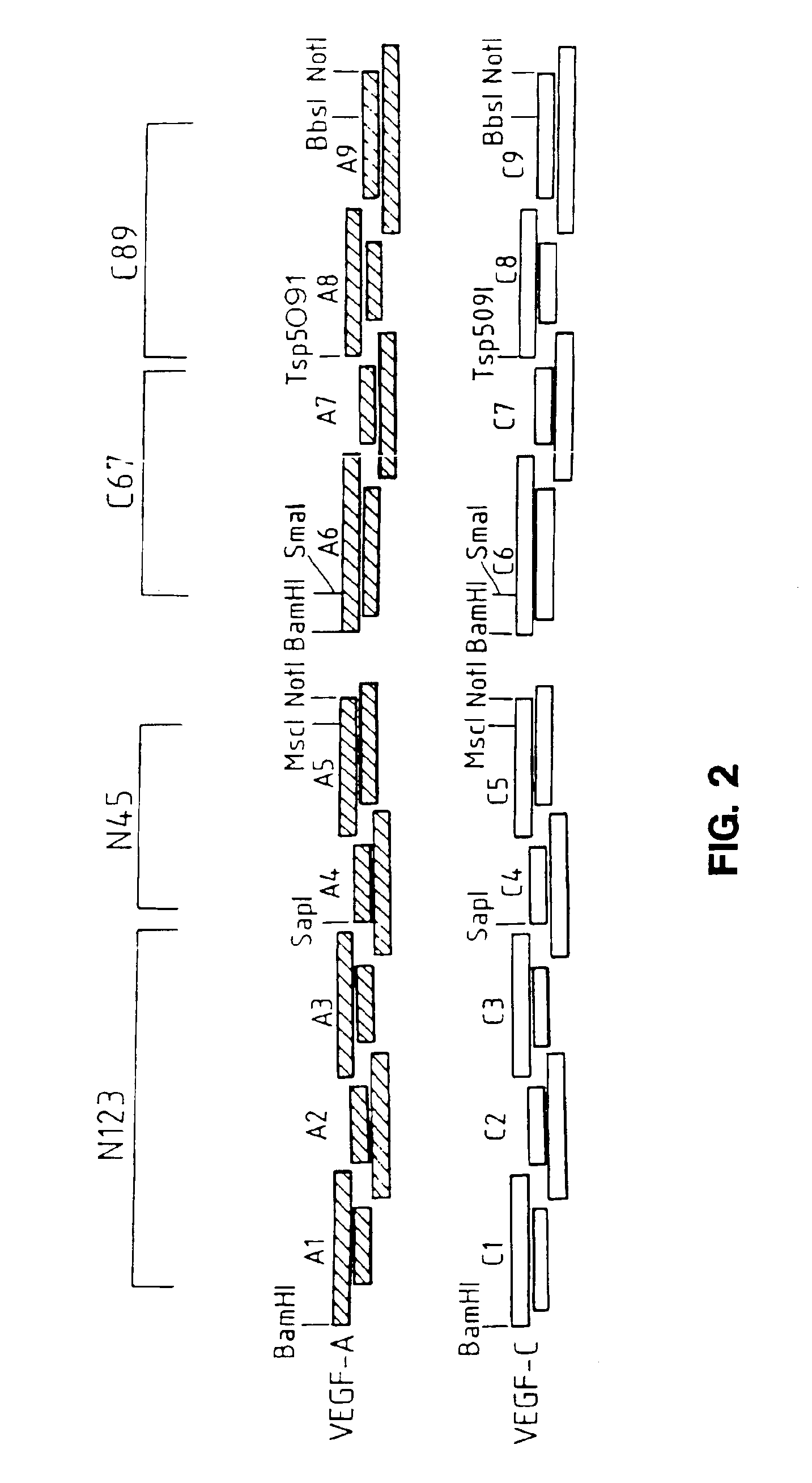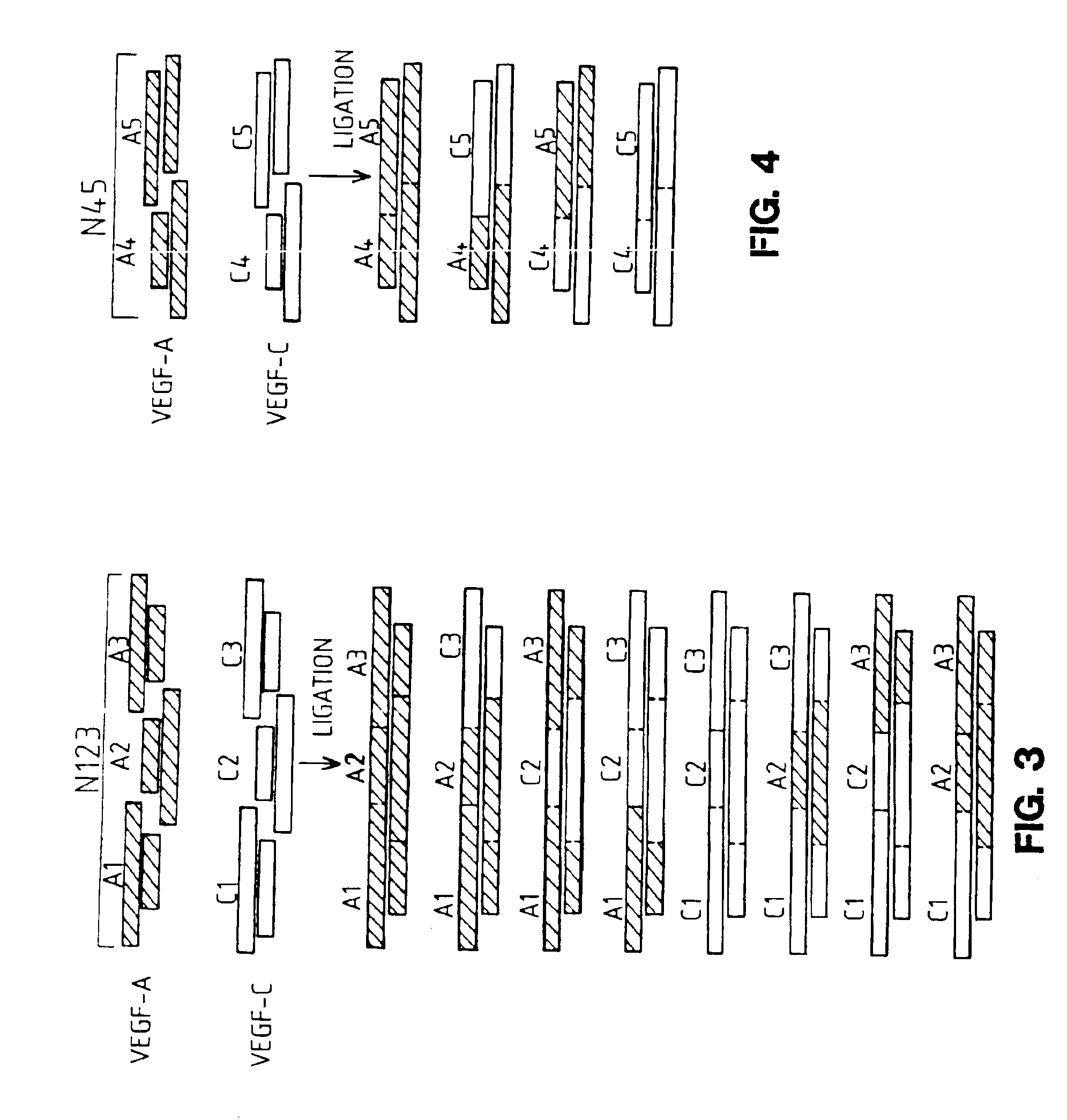Materials and methods involving hybrid vascular endothelial growth factor DNAs and proteins
a technology of vascular endothelial growth factor and hybrid vascular endothelial cells, which is applied in the direction of fusion polypeptides, cell culture active agents, fungi, etc., can solve the problems of impaired embryonic growth, patients who did not show significant improvement over the placebo-controlled group, and developmental abnormalities
- Summary
- Abstract
- Description
- Claims
- Application Information
AI Technical Summary
Benefits of technology
Problems solved by technology
Method used
Image
Examples
example 1
Construction of VEGF-A / VEGF-C Hybrid Molecules
[0252]Although the amino acid residues of the receptor binding domain of VEGF family members are share conserved motifs, these proteins exhibit different receptor specificities. In the following experiment, DNA molecules encoding polypeptides containing different portions of the receptor binding domains of either VEGF-A or VEGF-C were constructed using a combinatorial approach to create novel hybrid molecules with unique structural and functional characteristics.
[0253]To generate the novel molecules, the nucleotide sequences of VEGF-A and mature VEGF-C were analyzed to determine localized regions of nucleotide identity which would be suitable for designing short DNA fragments which could be synthesized and readily recombined. Eight corresponding regions of identity were selected in each molecule as sites for fragmentization (into nine fragments) and recombination into chimeric (hybrid) molecules. These fragmentation sites were chosen bas...
example 2
Expression of the Hybrid Molecules
[0277]Each of the 512 constructs were separately transfected transiently into 293T cells to express the different hybrid constructs. 293T cells were grown according to standard protocols in medium consisting of Dulbecco's modified Eagle's medium (D-MEM), and 10% fetal bovine serum (FBS). Twenty-four hours prior to transfection, confluent dishes were diluted 1:10 with fresh media into 6 wells. Four hours prior to transfection, the medium was changed. For each construct, 3 ug of DNA was transfected using standard protocols for calcium phosphate-mediated transfection [Sambrook et al., Molecular Cloning: A Laboratory Manual pp. 16.33-16.36 (1989)]. Twenty hours post-transfection, cells were washed twice with warn PBS and 2 ml of medium was added to each well.
[0278]Initial experiments were conducted to determine if the transfected cells were expressing the hybrid VEGF polypeptides encoded by the hybrid DNA molecules. Thus, 48 hours post-transfection, met...
example 3
Binding Assays of Hybrid Molecules to Soluble VEGF Receptor-Fc Fusion Proteins
[0280]The hybrid proteins that were expressed in 293T cells (see Example 2 and Table 1) were tested for the ability to bind soluble VEGF receptor-Fc fusion proteins. Binding of the hybrid proteins to all three VEGF receptors, VEGFR-1, VEGFR-2, and VEGFR-3, was analyzed in this manner. Exemplary binding assays have been described in Achen et al., Proc Natl Acad Sci USA 95:548-53 (1998), incorporated by reference in its entirety.
[0281]It will be appreciated that binding assays can be performed with any form of naturally occurring VEGF receptors that retain the ability to bind their respective ligands, including but not limited to whole cells that naturally express a receptor or that have been recombinantly modified to express the receptor; truncated, solublized extracellular ligand binding domains of receptors; fusions comprising receptor extracellular domains fused to other proteins such as alkaline phospha...
PUM
 Login to View More
Login to View More Abstract
Description
Claims
Application Information
 Login to View More
Login to View More - R&D
- Intellectual Property
- Life Sciences
- Materials
- Tech Scout
- Unparalleled Data Quality
- Higher Quality Content
- 60% Fewer Hallucinations
Browse by: Latest US Patents, China's latest patents, Technical Efficacy Thesaurus, Application Domain, Technology Topic, Popular Technical Reports.
© 2025 PatSnap. All rights reserved.Legal|Privacy policy|Modern Slavery Act Transparency Statement|Sitemap|About US| Contact US: help@patsnap.com



